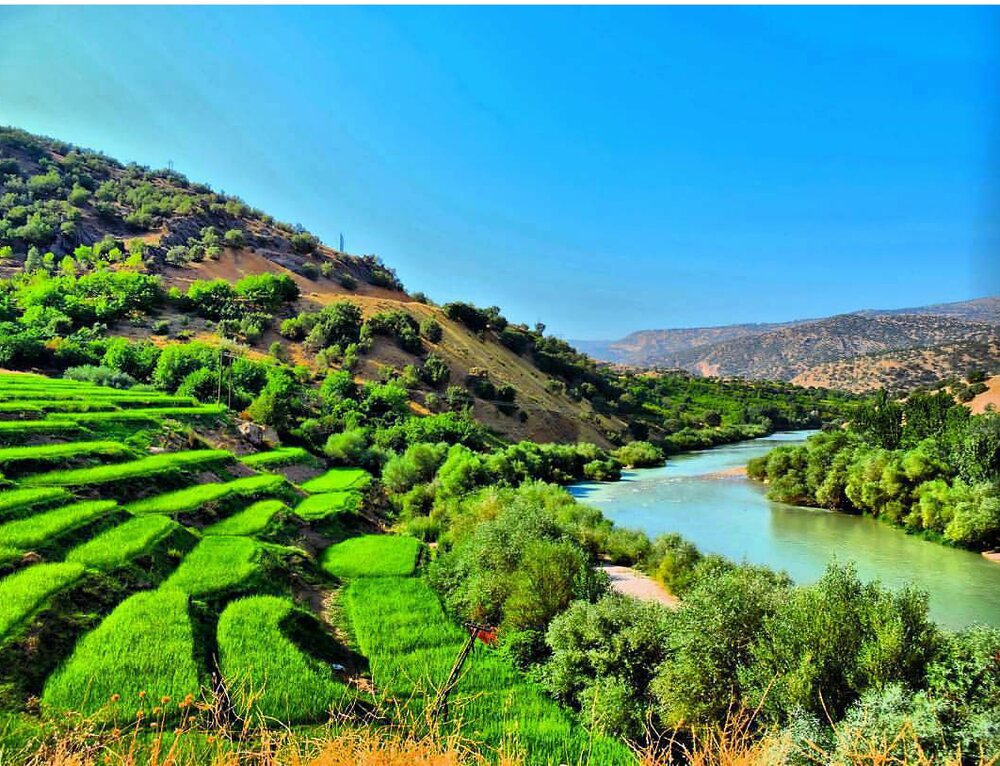A biosphere reserve 180 times more valuable than average land

TEHRAN – The Tang-e-Sayad and Sabzkuh Biosphere Reserve is located in the southwestern Chaharmahal-Bakhtiari province. It is estimated that each hectare of the area is 180 times more valuable than average land in Iran in terms of richness of plants and wildlife diversity.
Land subsidence, geological activities, and melting ice caps have formed several wetlands in the area inhabited by rare fauna such as the wild cat (Felis silvestris) and lebetine viper (Vipera lebetina). Research shows that 22 fish species, including the Pike barb (Esox niger) and mesopotamian catfish (Silurus triostegus) are found in the Karun River, which runs through the proposed area.
During the cold season bushlands in the area welcome migratory birds such as the white stork (Ciconia ciconia) and greater flamingo (Phoenicopterus roseus), according to the UNESCO website.
The presence of several rivers and springs in the proposed site has led to an increase in the development of agriculture and animal husbandry. Local handicrafts such as carpets, felt, dhurrie rugs, and folk festivals also offer tourism development potential in the area.
The main landscape of the reserve is highly distinctive in terms of the height and density of its plant coverage. According to research conducted in the area, every hectare is 180 times more valuable than average land in Iran in terms of richness of plants and wildlife diversity.
The region is also mountainous with waterfalls, wetlands, and abundant springs, which function as a permanent basin for the Karun River, the biggest river in Iran.
Various oak species cover the highlands while wild pistachio and almond cover the lower lands. Lote, walnut, and pear trees are also scattered about the reserve. Depending on the habitat conditions, oak-mastic and other combinations of other tree or shrub species, such as hackberry, hawthorn, and Arjan, exist alone or in groups constituting the forest areas. More than 450 plant species can be found in the reserve.
The variety of ecosystems creates a valuable fauna population. These include 27 mammal species such as the Syrian brown bear (Ursus arctos syriacus) and striped hyena (Hyaena hyaena), 147 bird species including the greater flamingo (Phoenicopterus roseus) and white stork (Ciconia ciconia), 26 reptile and amphibian species such as the snake-eyed lizard (Ophisops elegans), and 24 fish species including the mesopotamian catfish (Silurus triostegus).
The Choghakhor Wetlands were designated a Ramsar Wetland Site.
There are 669 biosphere reserves in 120 countries. Since 1960, Iran has been a pioneer member of Man and Biosphere Committee (MAB) and has already 10 registered Biosphere reserves that cover important protected areas such as Touran, Arjan and Parishan, Urumiyeh, and Miankaleh. All of these sites cover important biodiversity, wetlands, and forests altogether.
During the 27th MAB ICC meeting in Paris in June 2015, Sabzkuh and Tang-e Sayyad and Hamoun Biosphere Reserves were formally registered as 11th and 12th Biosphere reserves in Iran.
FB/MG

Leave a Comment